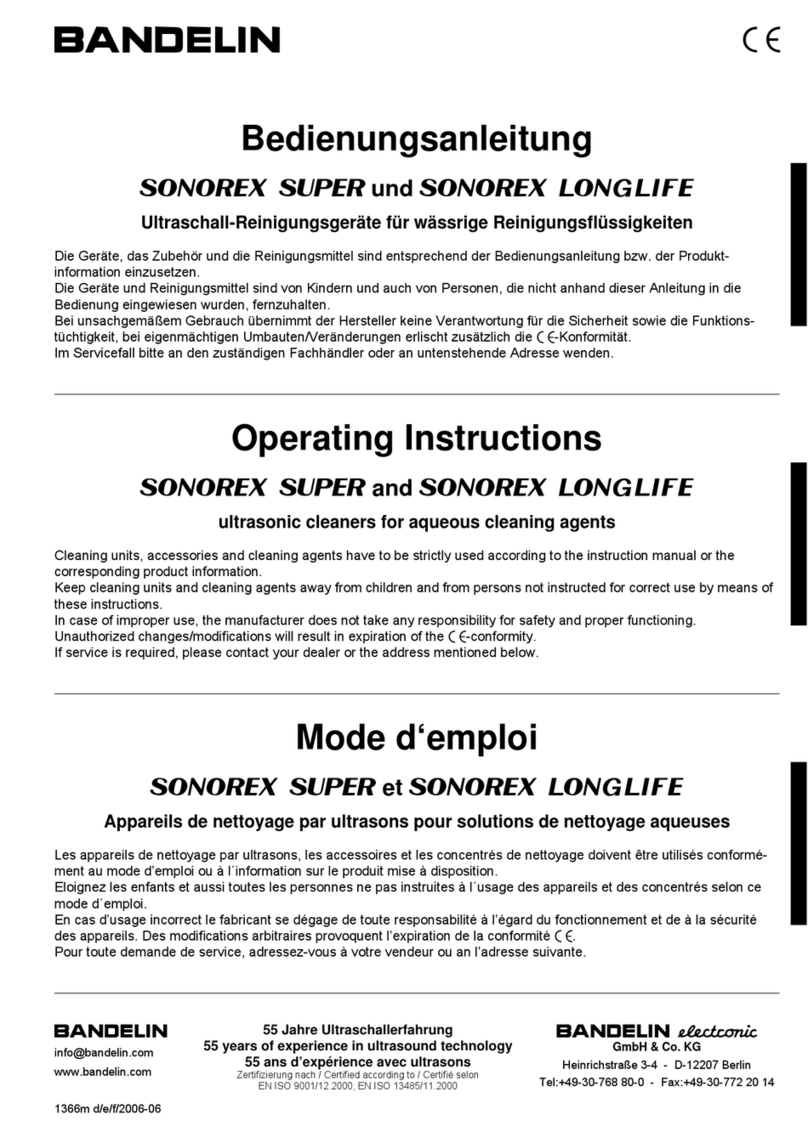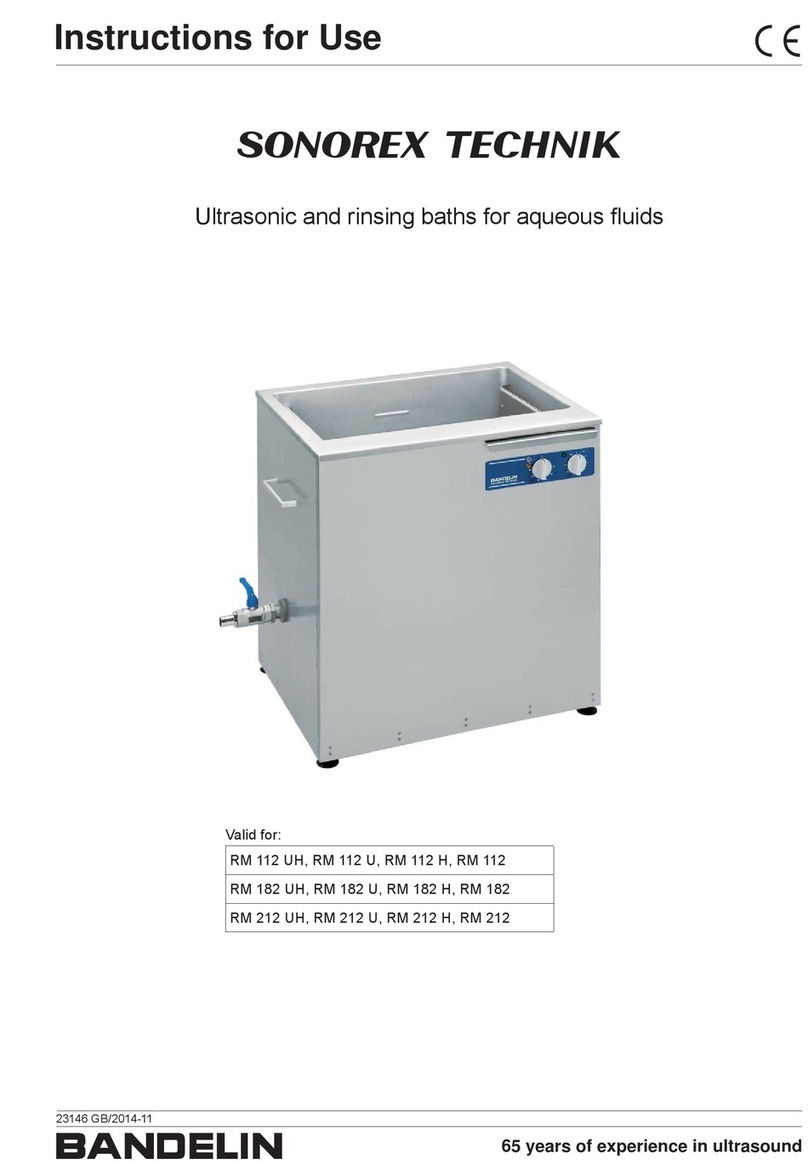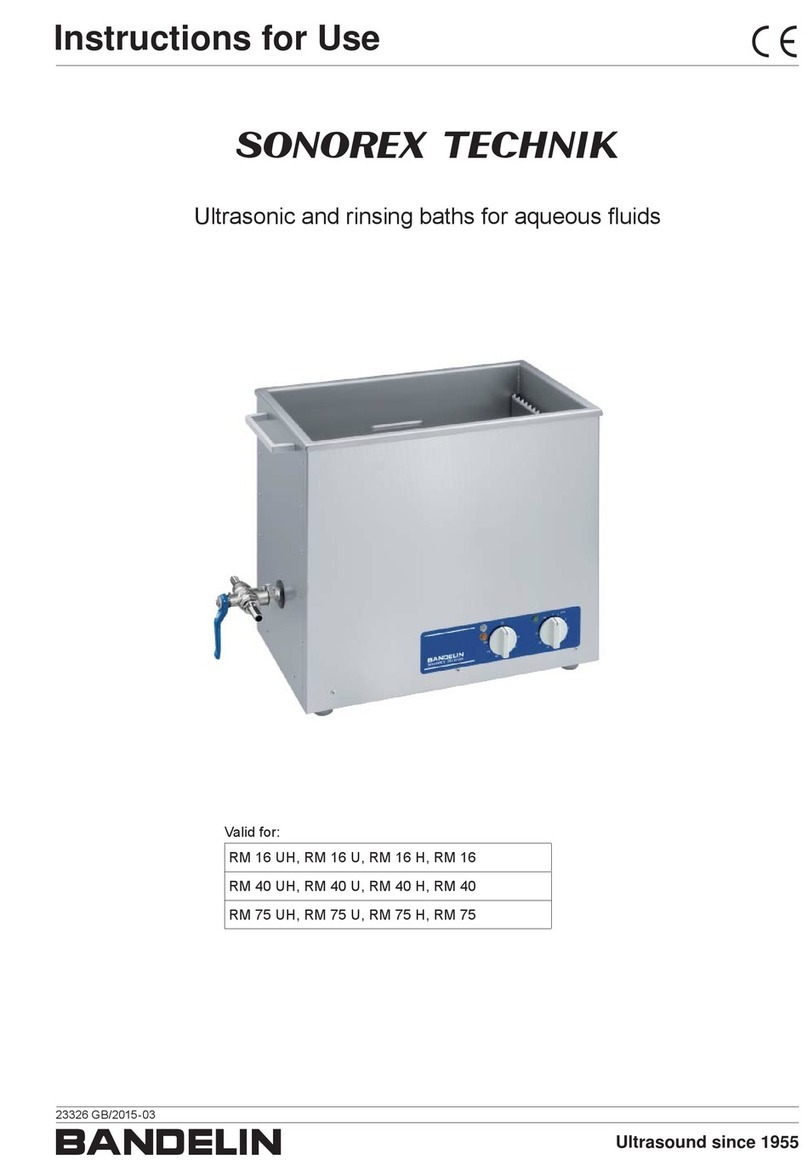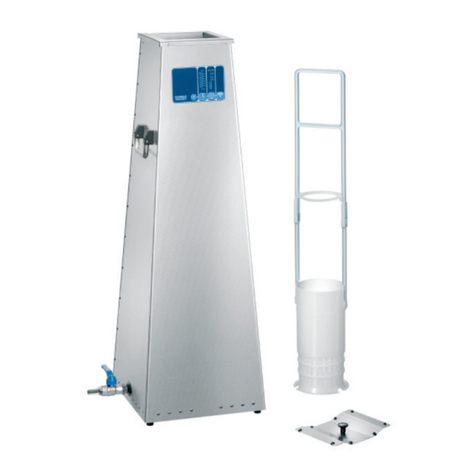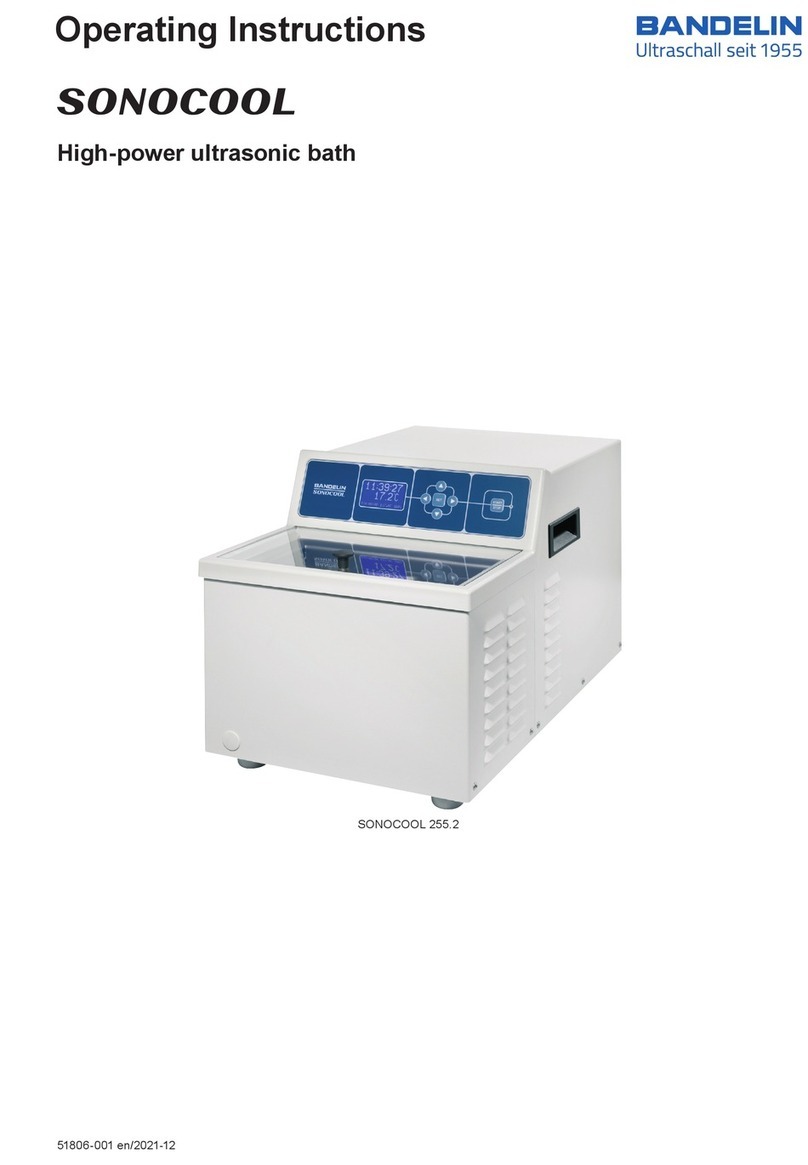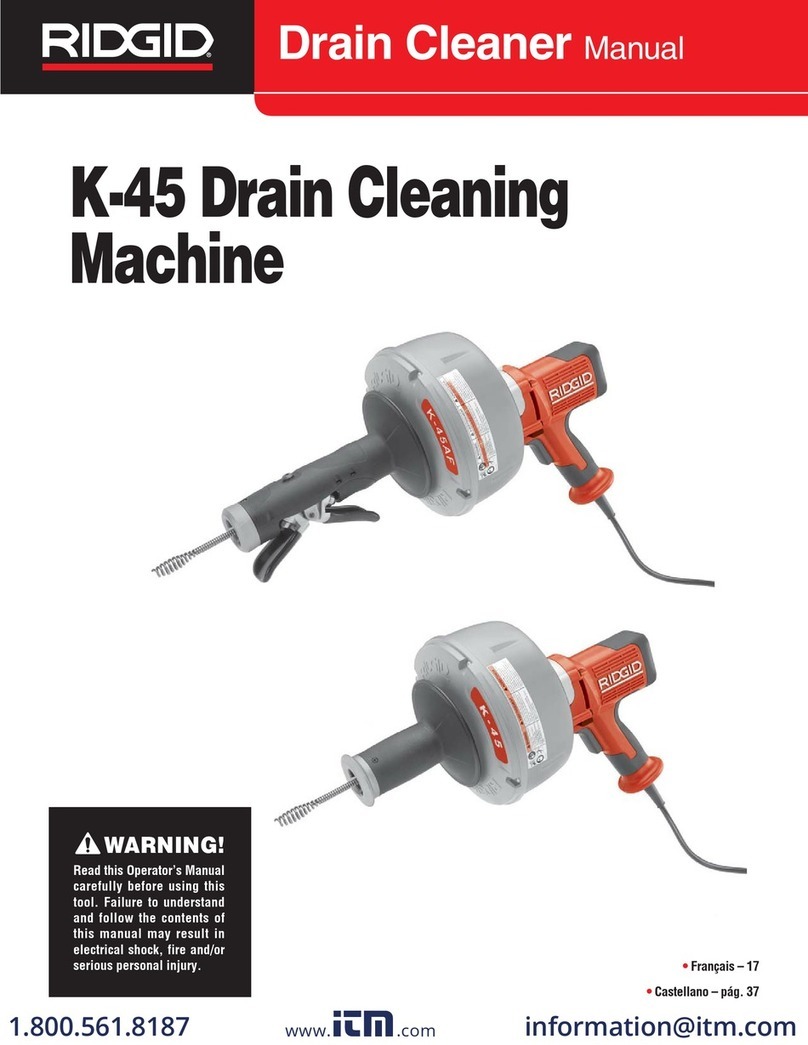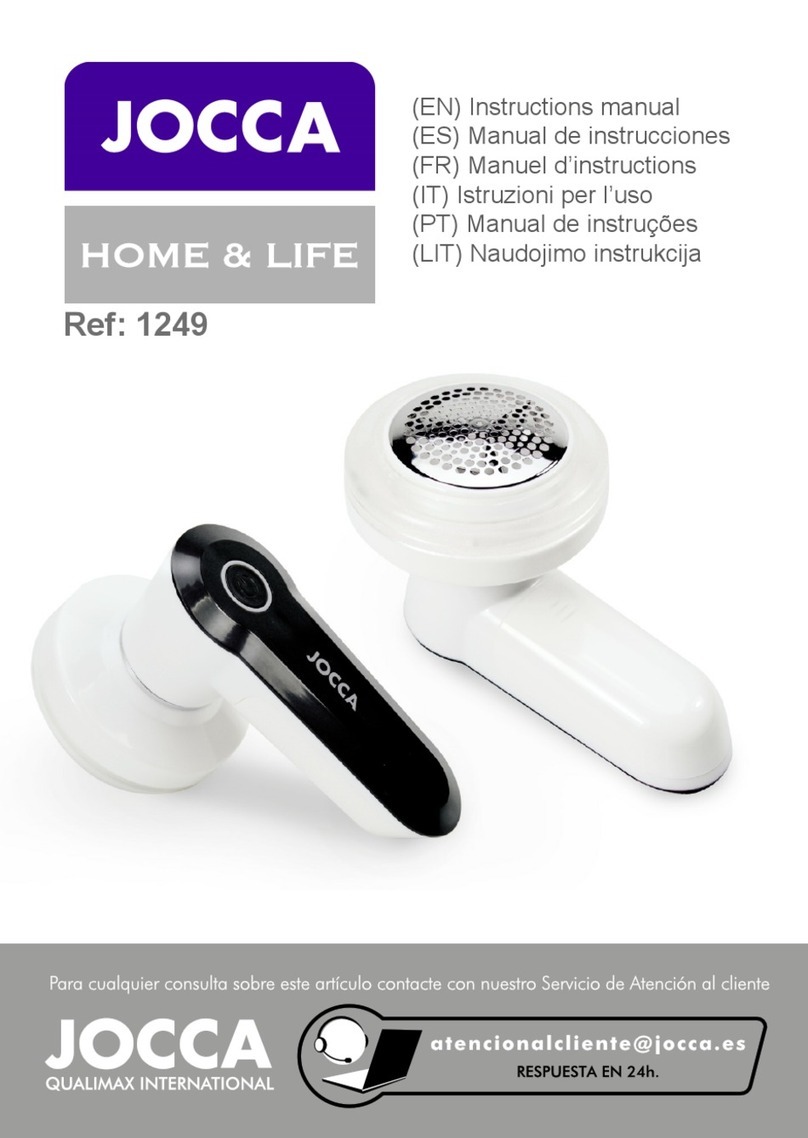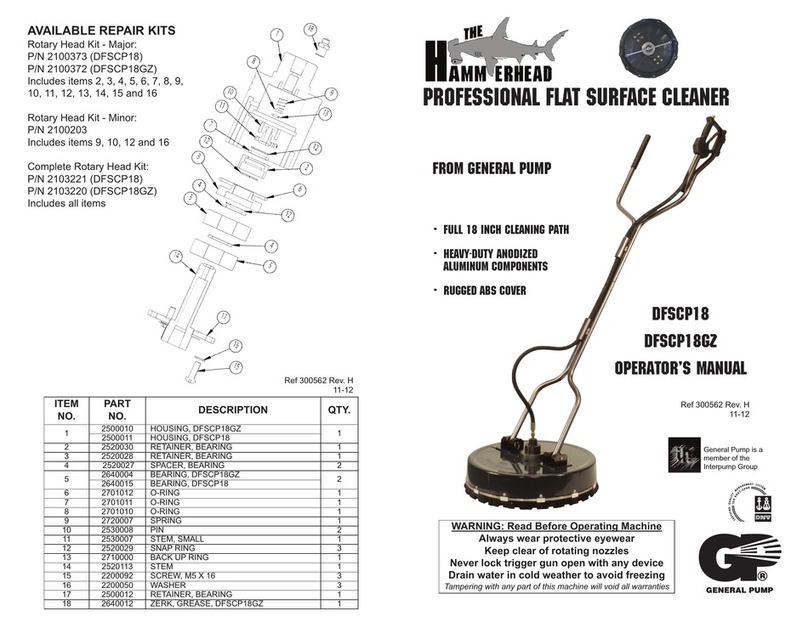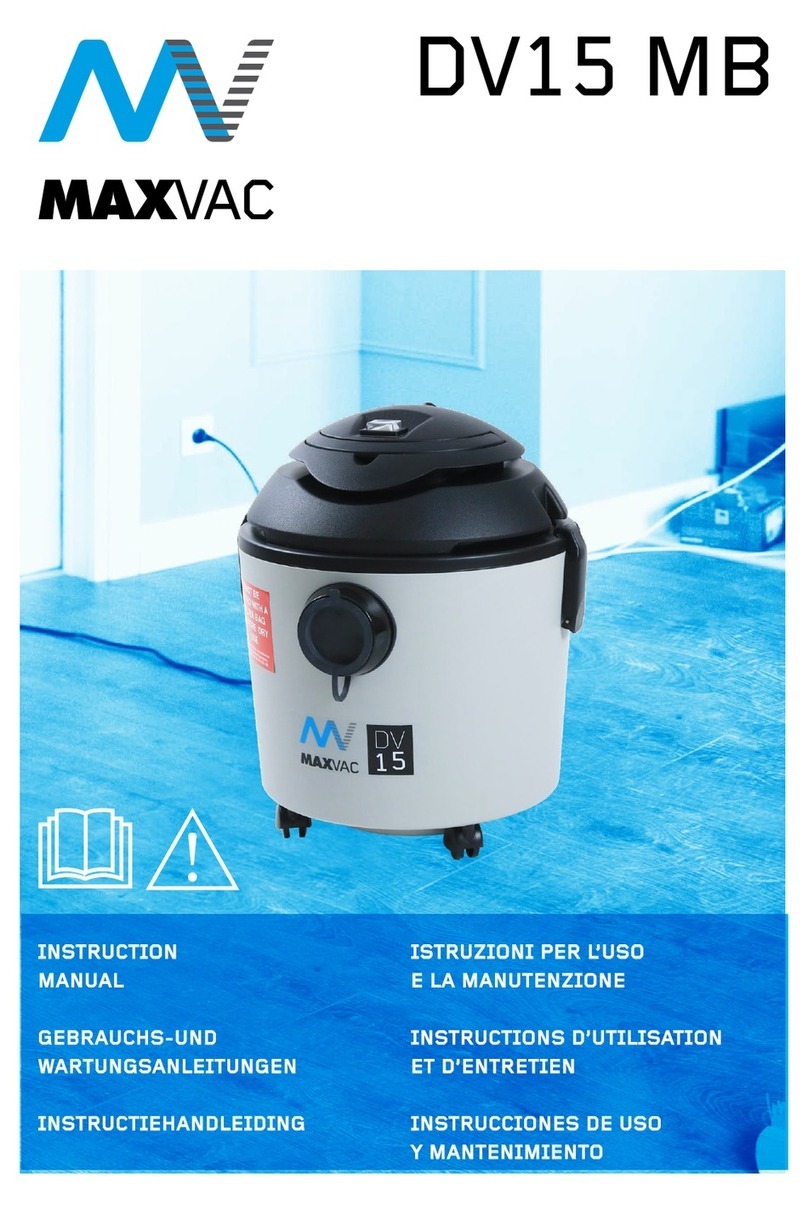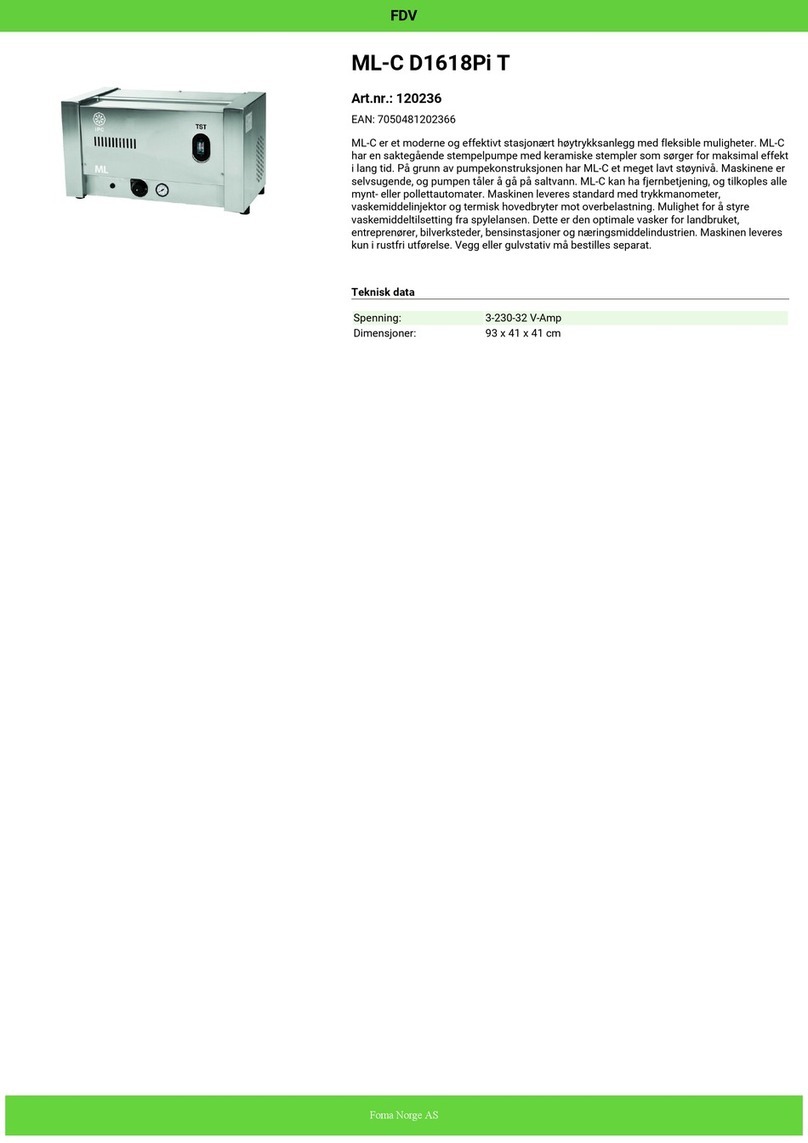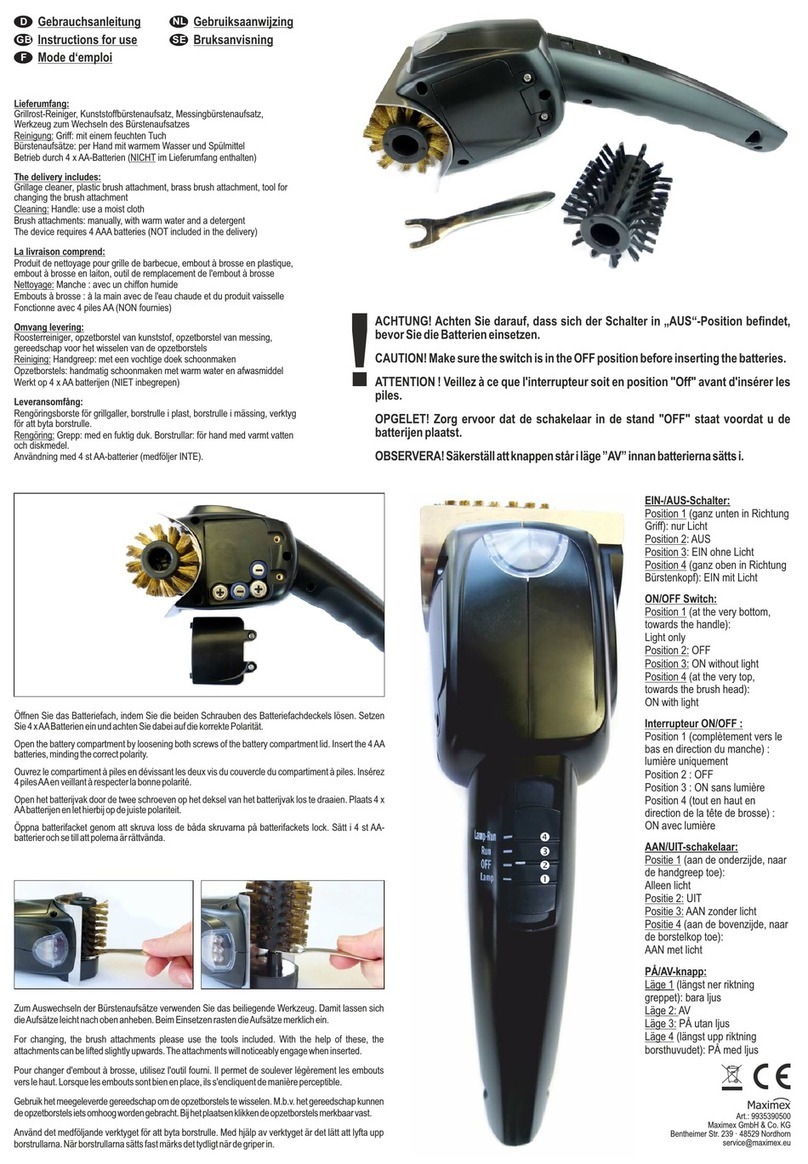
1786-001 en/2022-08 9/38
Safety/2
2.6 Danger due to ultrasound
The strong ultrasound in the ultrasound bath destroys cell struc-
tures. If a body part is immersed in the sonication fluid during oper-
ation, this can lead not just to skin damage, but also to internal
tissue damage. On fingers, the periosteum can become damaged.
• Do not touch the sonication fluid during operation.
• Never sonicate living beings.
2.7 Danger due to preparations used
Preparations used in the ultrasound bath may be toxic or corrosive.
They can irritate the eyes, skin and mucous membranes. Vapours
and aerosols can also be dangerous.
• Wear gloves and safety goggles when handling hazardous
preparations.
• Do not ingest the preparations and do not allow them to come
into contact with the eyes or skin. Do not lean over the ultra-
sound bath, in order to avoid vapours from coming into contact
with the eyes or from being inhaled.
• Place a lid on the ultrasound bath during operation. In case of
dangerous vapours, use a suction device.
• Observe the information on the label and in the safety data
sheet of the preparation.
• Keep the preparations away from children and untrained per-
sons.
2.8 Disposal of sonication liquid
Dispose of the sonication liquid in accordance with the specifica-
tions of the manufacturer of the ultrasound medium used. The rec-
ommended ultrasound media in the TICKOPUR product line by
DR. H. STAMM GmbH are biodegradable in accordance with the
provisions of Regulation (EC) No. 648/2004 (Detergents Regula-
tion). If necessary, the sonication liquid must be neutralised before
disposal.
Depending on the type of contamination involved, water-polluting
substances like oils or heavy metal compounds may be introduced
to the sonication liquid during cleaning. If the threshold values for
